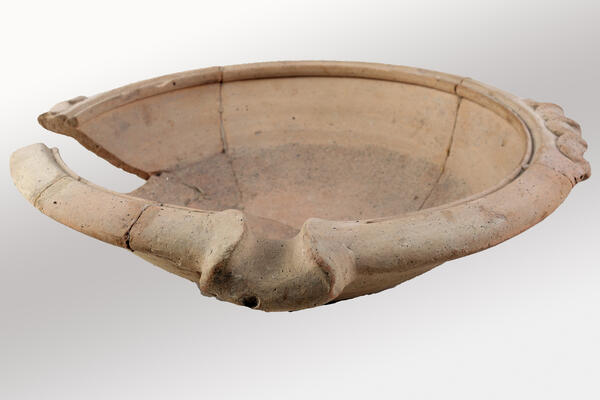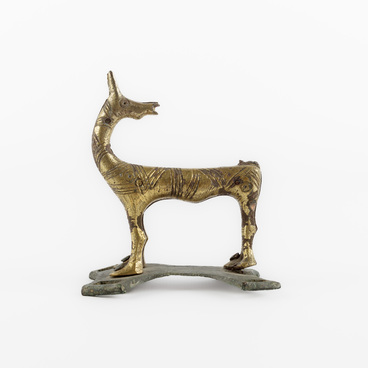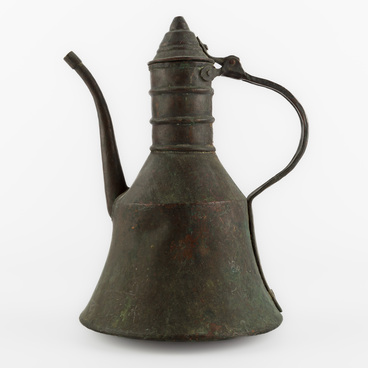Ceramics are pots and other articles made from clay (or mixtures containing it) and fired in a kiln or dried in the sun.
In the Neolithic period, the art of making ceramics was only springing. Virtually every family made simple pottery for their own use. Such vessels were unattractive, and the clay contained a large amount of impurities. First, the pots were molded and dried in the sun. Ceramics began to be fired in a kiln much later. Initially, women were engaged in the manufacturing of ceramic products that the family used. And only when professional potters began to appear, men took up the profession and it became their main job.
Ancient Greek potters reached a high level of the ceramics quality and design. They produced ceramics of various shapes and sizes, from huge pithoi with a capacity of several hundred liters to miniature balsamarii for aromatic oils. In the 4th century BC, during the Greek colonization, the Greeks actively developed the Black Sea coast of the Caucasus and founded their colony cities to trade with local tribes. It was from this time that various vessels of Greek origin began to be used in the life of local tribes. They were a sign of their owner’s wealth. Unlike local pottery, which was mostly molded, Greek vessels were made on a potter’s wheel from better quality clay. Among them were louteria — vessels used for household and hygienic purposes.
Louteria were made of clay, metal (bronze and silver) and sometimes decorated with rich patterns. Depending on the size, shape and materials, they could be used not only for ablutions, but also for mixing wine and water. They were widely used not only on the Balkan Peninsula, but also on the Black Sea coast of the Caucasus.
The museum’s collection contains a louterion discovered in 2000 during archaeological excavations of a watchtower of Roman times, located near the village of Arkhipo-Osipovka, Krasnodar Territory. The leader of the expedition was B.V. Meleshko. The guard tower-estate was, according to the reconstruction, a building with a stone base and the first floor, as well as a wooden structure, which had been probably destroyed during a fire. The tower existed for a rather short period and, according to one version, was part of a chain of similar structures to control the surrounding territories.
In the Neolithic period, the art of making ceramics was only springing. Virtually every family made simple pottery for their own use. Such vessels were unattractive, and the clay contained a large amount of impurities. First, the pots were molded and dried in the sun. Ceramics began to be fired in a kiln much later. Initially, women were engaged in the manufacturing of ceramic products that the family used. And only when professional potters began to appear, men took up the profession and it became their main job.
Ancient Greek potters reached a high level of the ceramics quality and design. They produced ceramics of various shapes and sizes, from huge pithoi with a capacity of several hundred liters to miniature balsamarii for aromatic oils. In the 4th century BC, during the Greek colonization, the Greeks actively developed the Black Sea coast of the Caucasus and founded their colony cities to trade with local tribes. It was from this time that various vessels of Greek origin began to be used in the life of local tribes. They were a sign of their owner’s wealth. Unlike local pottery, which was mostly molded, Greek vessels were made on a potter’s wheel from better quality clay. Among them were louteria — vessels used for household and hygienic purposes.
Louteria were made of clay, metal (bronze and silver) and sometimes decorated with rich patterns. Depending on the size, shape and materials, they could be used not only for ablutions, but also for mixing wine and water. They were widely used not only on the Balkan Peninsula, but also on the Black Sea coast of the Caucasus.
The museum’s collection contains a louterion discovered in 2000 during archaeological excavations of a watchtower of Roman times, located near the village of Arkhipo-Osipovka, Krasnodar Territory. The leader of the expedition was B.V. Meleshko. The guard tower-estate was, according to the reconstruction, a building with a stone base and the first floor, as well as a wooden structure, which had been probably destroyed during a fire. The tower existed for a rather short period and, according to one version, was part of a chain of similar structures to control the surrounding territories.





